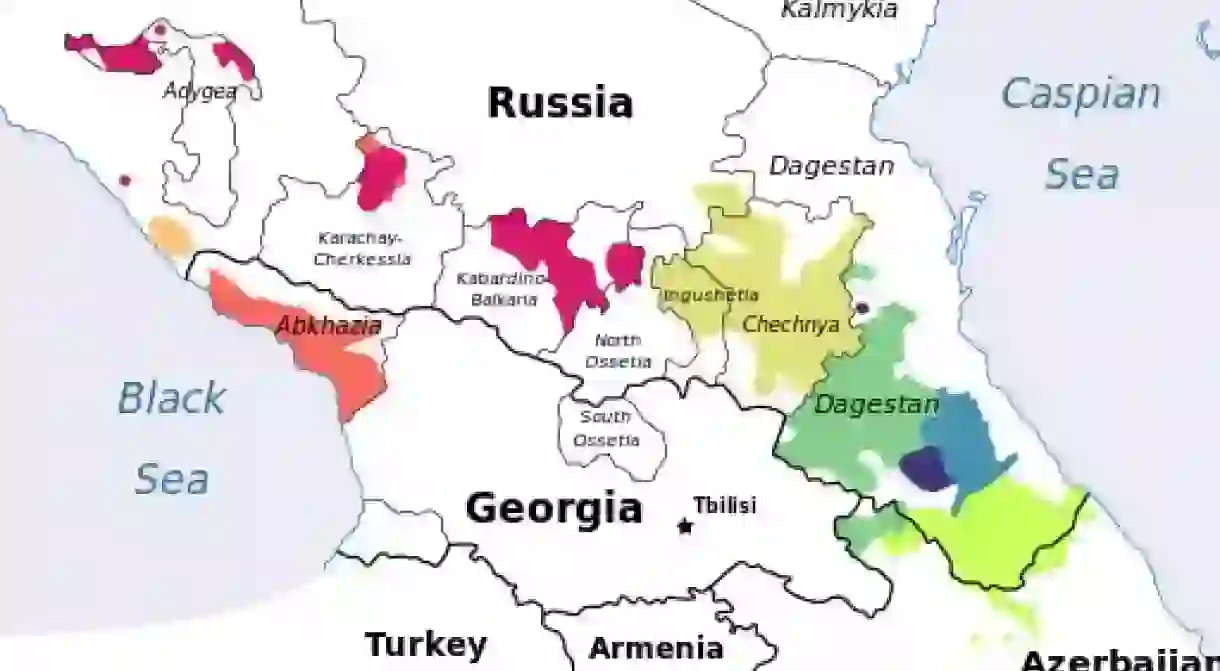16 Incredible Facts About the Languages of the Caucasus

The Caucasian languages are a remarkably diverse collection of languages vocalized by more than 10 million people around the Caucasus Mountain region lying between the Black Sea and the Caspian Sea. The similarity between the languages enables scholars to classify them into several families with little or no apparent relation to each other. Want to learn more about these languages? Then keep on reading!
The Caucasian languages fall into three language families
These language families are Abkhazo-Adyghian, Nakho-Dagestanian, and Kartvelian. The specific genetic associations of the Caucasian languages are still unclear on many subjects, not only regarding interrelationships of those three major groups, but also extending to some internal subgroups.
The Kartvelian language family includes four languages
Georgian, Megrelian (Mingrelian), Svan and Laz (or Chan) are part of the Kartvelian language family.
The dialects of Georgian fall into two groups
East and West Georgian dialects have slight differences between each other.
Only Georgian has ancient literary tradition
The Georgian language was believed to be created during the fifth century AD. It’s presumed that old Georgian script was derived from the Greek alphabet.

Mengrelian, Svan and Laz languages are unwritten
The Samegrelo and Zemo Svaneti regions use Georgian as a literary language. Laz, spoken on the southeastern shore of the Black Sea, uses Georgian as a literary language on Georgia’s territory. They use Turkish in Turkey’s territory.
Svan language has four distinct dialects
These dialects are Lower and Upper Bal in the Inguri region, and Lentekh and Lashkh in the Tskhenistskhali region; as those languages are unwritten, Georgian and Russian are used as literary languages.
Kartvelian languages have many ancient loanwords
These languages have borrowed words from Iranian, Arabic, Greek, and Turkish languages.
Abkhazo-Adyghian family has five languages
This language family consists of Abkhaz, Adyghe, Abaza, Ubykh and Kabardian languages. The Abkhaz language is spoken in Abkhazia, an occupied territory of Georgia, by 113,000 native speakers according to the 1993 census.
Abkhazo-Adyghian languages are spoken mainly in the Middle East
Many citizens living in Turkey, Jordan, Iraq, and Syria speak these languages.
The Ubykh language is extinct
The only trace of this language was found in the vicinity of Tuapse, Russia. It is the only unwritten language in the group.

Nakho-Dagestanian family consist of two languages
As the name suggests, this language group includes Nakh and Dagestanian languages. Nakh language comprises Chechen, Ingush, and Bats. The latter is often referred to as Tsova-Tushian, spoken in the Zemo Alvani and Tusheti regions of Georgia. Both Chechen and Ingush languages are written, while Bats is not and uses Georgian as a literary language.
Bats is severely endangered to extinct
Bats is spoken by no more than 800 people
Only Avar from the Avar-Andi-Dido languages is written
The Avar language, spoken in parts of Dagestan and Azerbaijan, is the literary language for other languages in the group. Small communities speak the language in Chechnya, Georgia, Ukraine, Turkey, and Kazakhstan. Spoken by no more than 762,000 people, the language has been listed by UNESCO as at risk of extinction.
Armenians predominantly speak Indo-European languages
With up to 12 million native speakers, Armenian is the dominant Indo-European language in the region, followed by the Ossetian language.
Several Indo-European languages are spoken in the Caucasus
Greek, Persian, Kurdish, Judeo-Tat, Talysh, and Slavic languages (Ukrainian and Russian) are other Indo-European languages spoken here.
Assyrian is also spoken in the Caucasus
Assyrian Neo-Aramaic, brought by Assyrians who fled the Assyrian Genocide during the WWI, is spoken by 30,000 people, while Bohtan Neo-Aramaic is at risk of extinction (about 1,000 people speak it).













